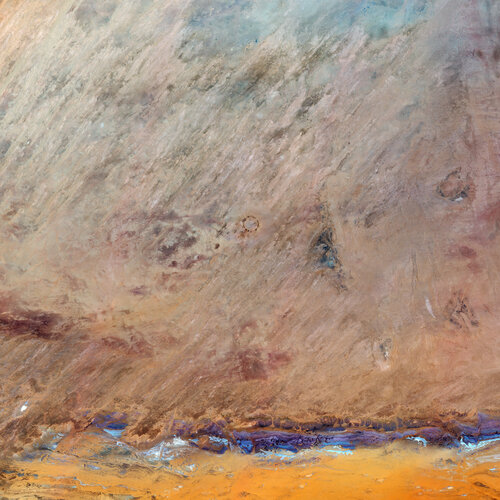Deep within the Sahara Desert lies one of the best-preserved craters on Earth. On Asteroid Day, the Copernicus Sentinel-2 mission takes us over the almost-perfectly circular Tenoumer Crater in Mauritania.
Zoom in to explore this image in its full 10 m resolution.
Tenoumer Crater, visible in the centre of the image, is 1.9 km wide. The rims of the crater rise some 110 m high above the base, but the bottom of the crater is covered with approximately 200 to 300 m thick layer of sediments.
It was long debated whether the crater was formed by a volcano or meteorite. Scattered rocks around the crater, similar to basalt, created the impression of an ancient volcano. Yet a closer exanimation of the structure revealed the crater’s hardened ‘lava’ was actually rock that had melted by a meteorite impact.
The crater sits in a vast plain of rocks that are so ancient they were deposited hundreds of millions of years before the first dinosaurs walked Earth. Even though it resides in ancient rock, Tenoumer is much younger, ranging in age between 10 000 and 30 000 years old.
This Sentinel-2 false-colour image, captured on 16 May 2022, shows the arid landscape surrounding the crater which appears in varying shades of brown, tan and orange.
Asteroid Day is the United Nations-sanctioned day of public awareness of the risks of asteroid impacts, held annually on 30 June. More than one million asteroids have been discovered in the Solar System, with many more expected to be out there. ESA’s Planetary Defence Office, ESA’s Near-Earth Object Coordination Centre and astronomers around the globe are looking up to keep us safe, working together to ensure we know well in advance if an asteroid is discovered on a collision course.
Tune into ESA WebTV today from 10:30 CEST where asteroid experts from ESA, from across Europe and worldwide will converge in Luxembourg to take part in a packed four-hour live programme of panels and one-on-one interviews. More information can be found here.



 Image:
Deep within the Sahara Desert lies one of the best-preserved craters on Earth. On Asteroid Day, the Copernicus Sentinel-2 mission takes us over the almost-perfectly circular Tenoumer Crater in Mauritania.
Image:
Deep within the Sahara Desert lies one of the best-preserved craters on Earth. On Asteroid Day, the Copernicus Sentinel-2 mission takes us over the almost-perfectly circular Tenoumer Crater in Mauritania.